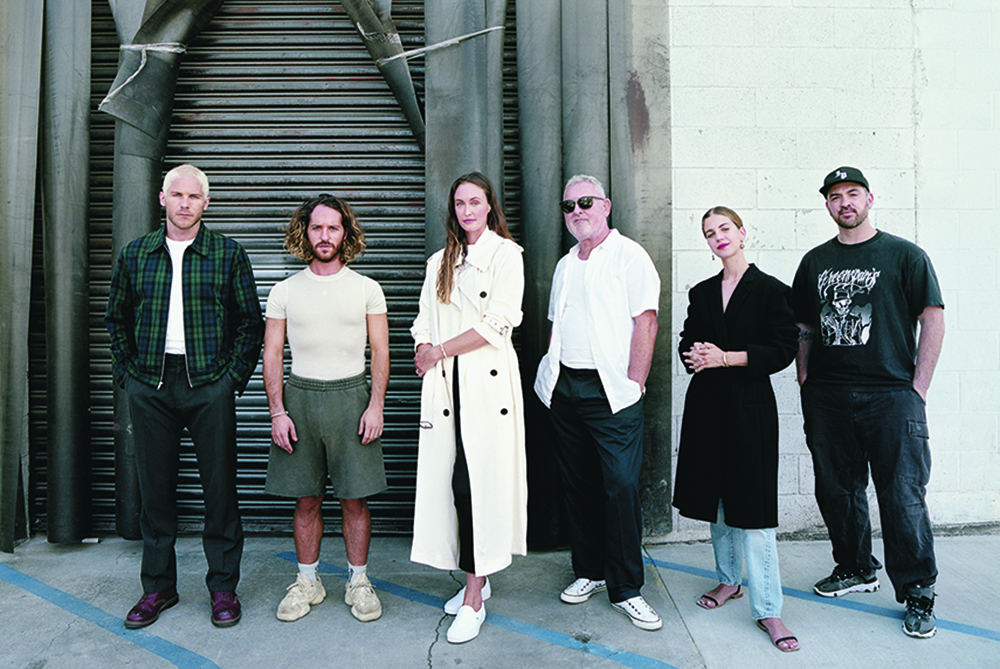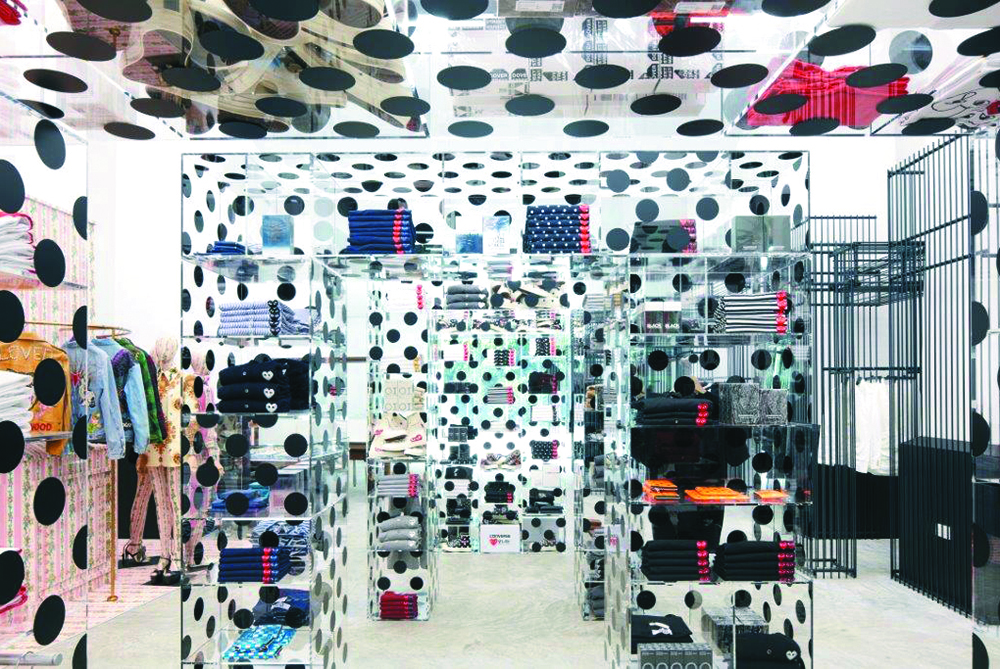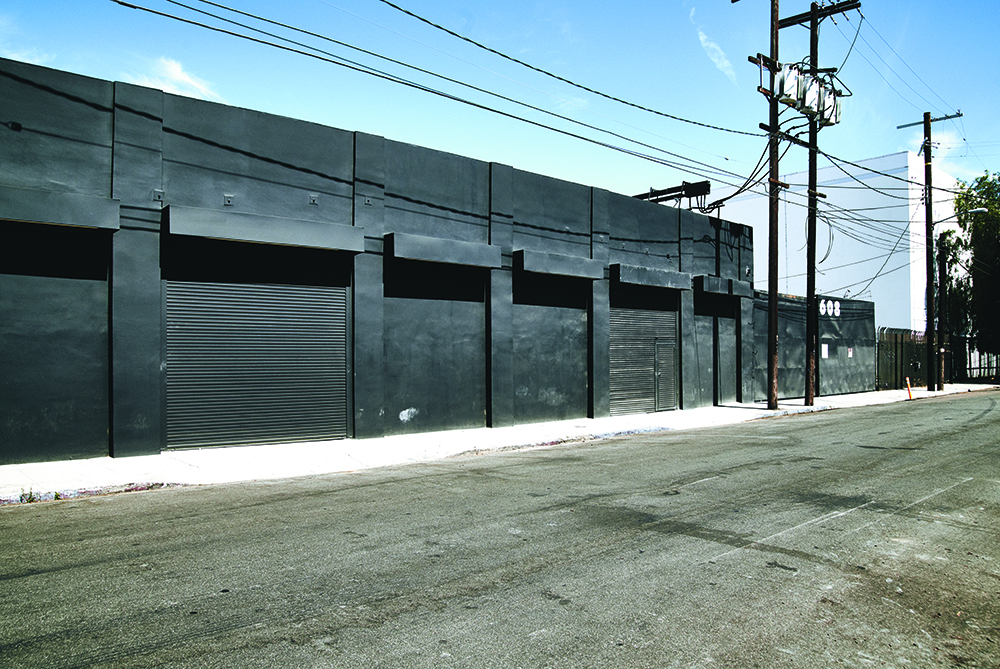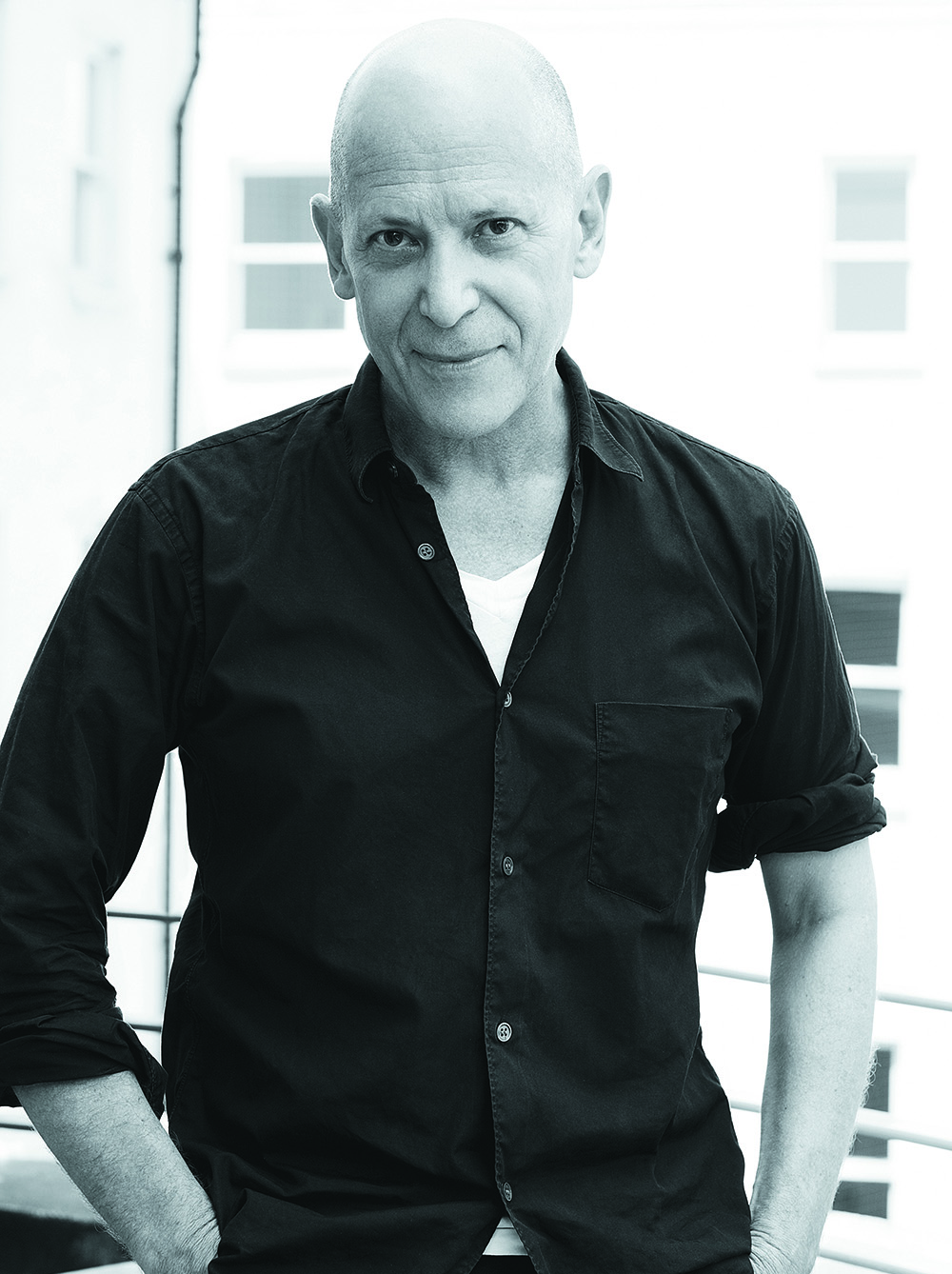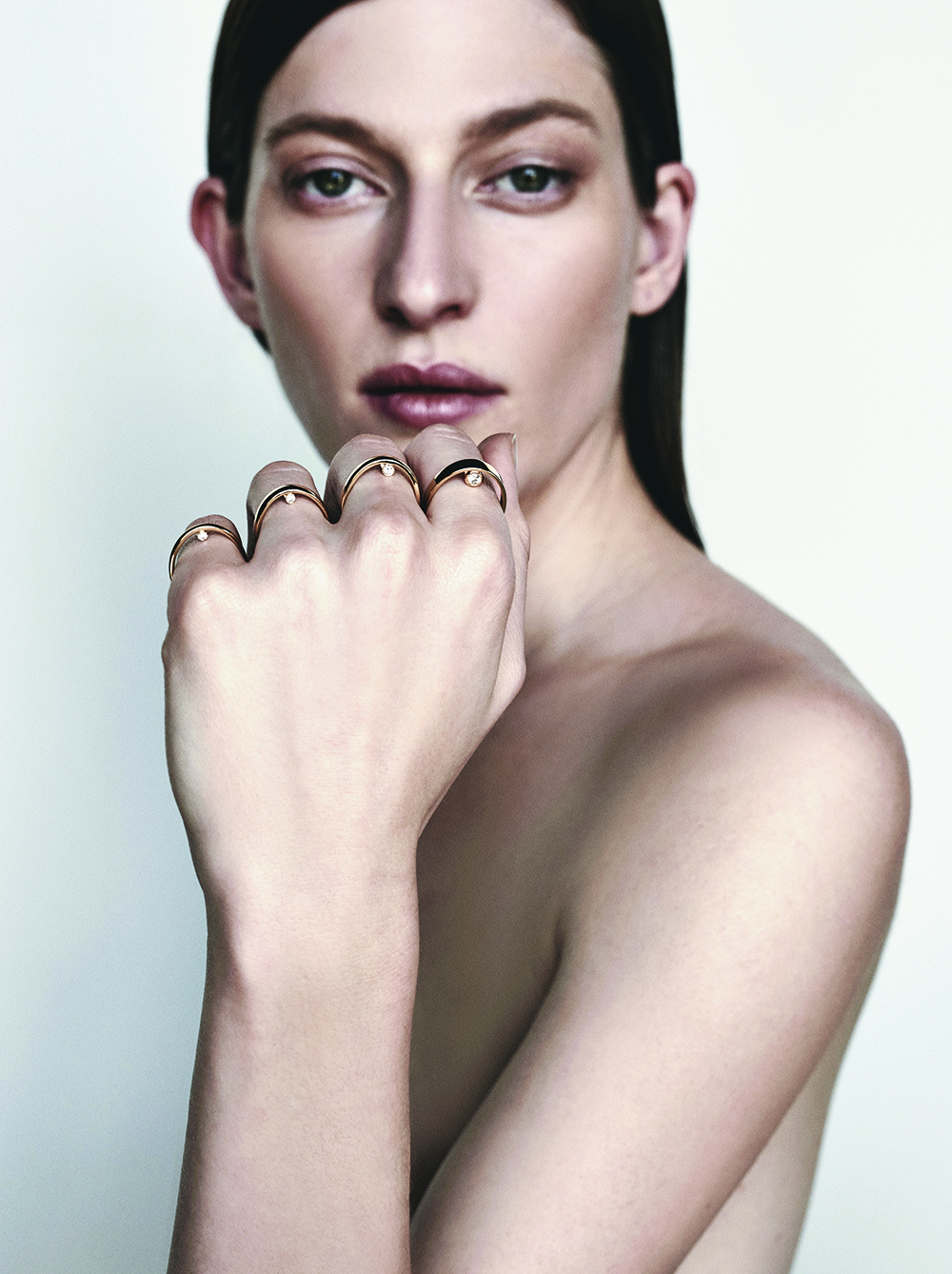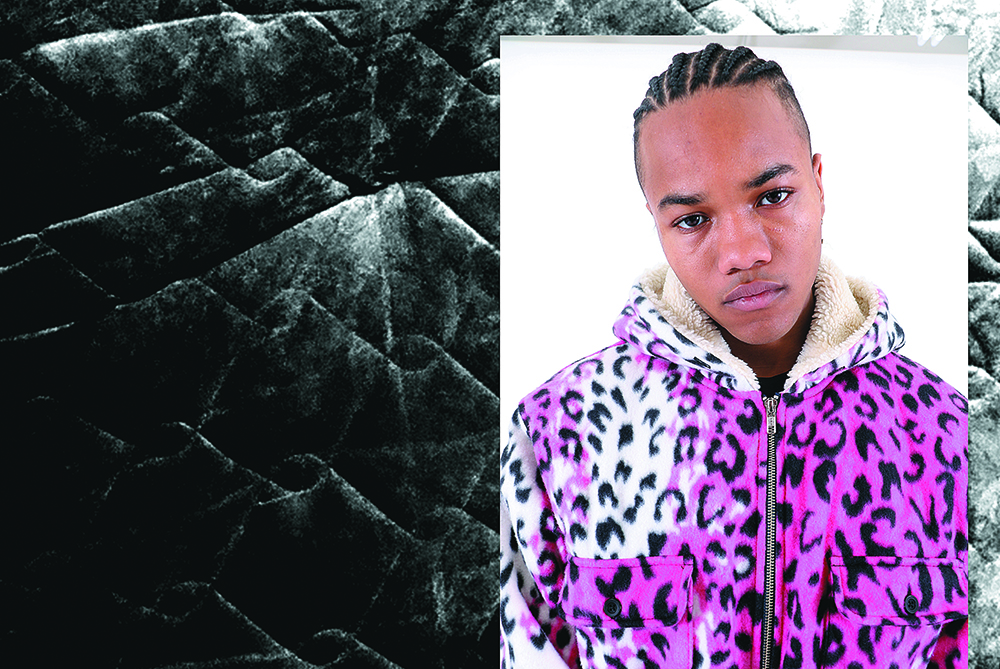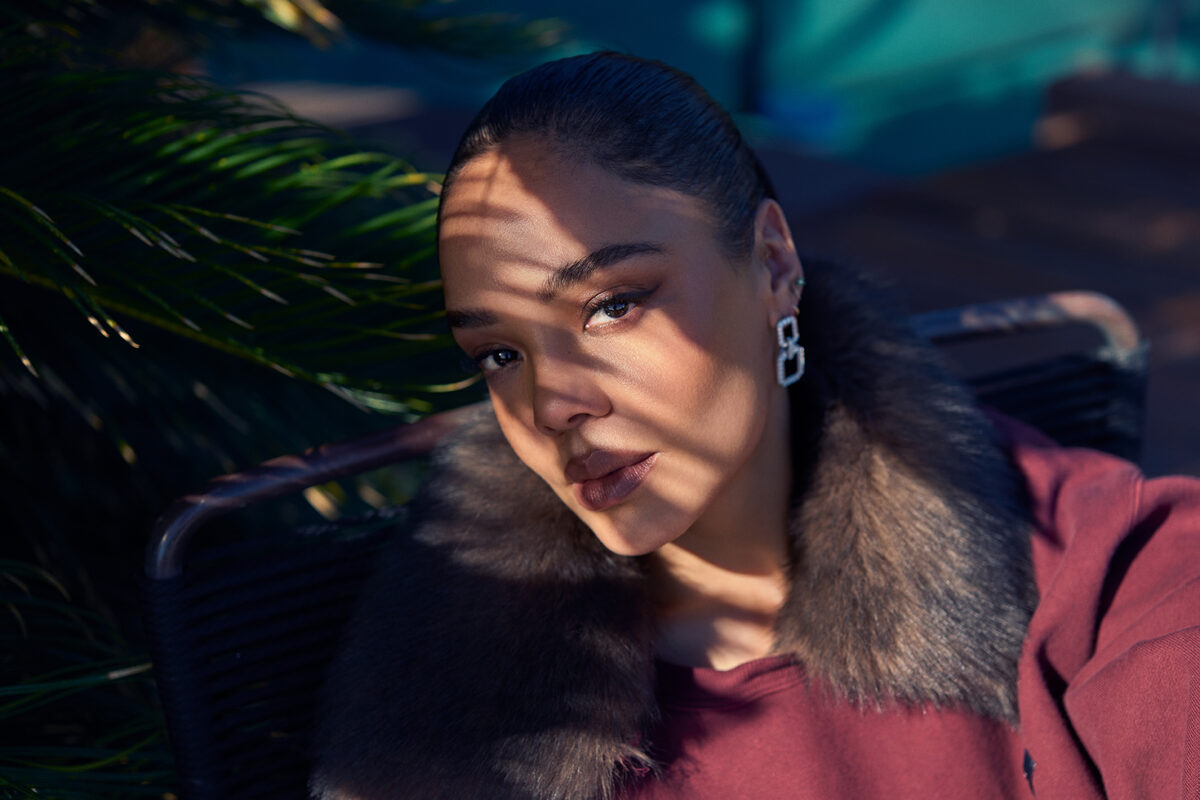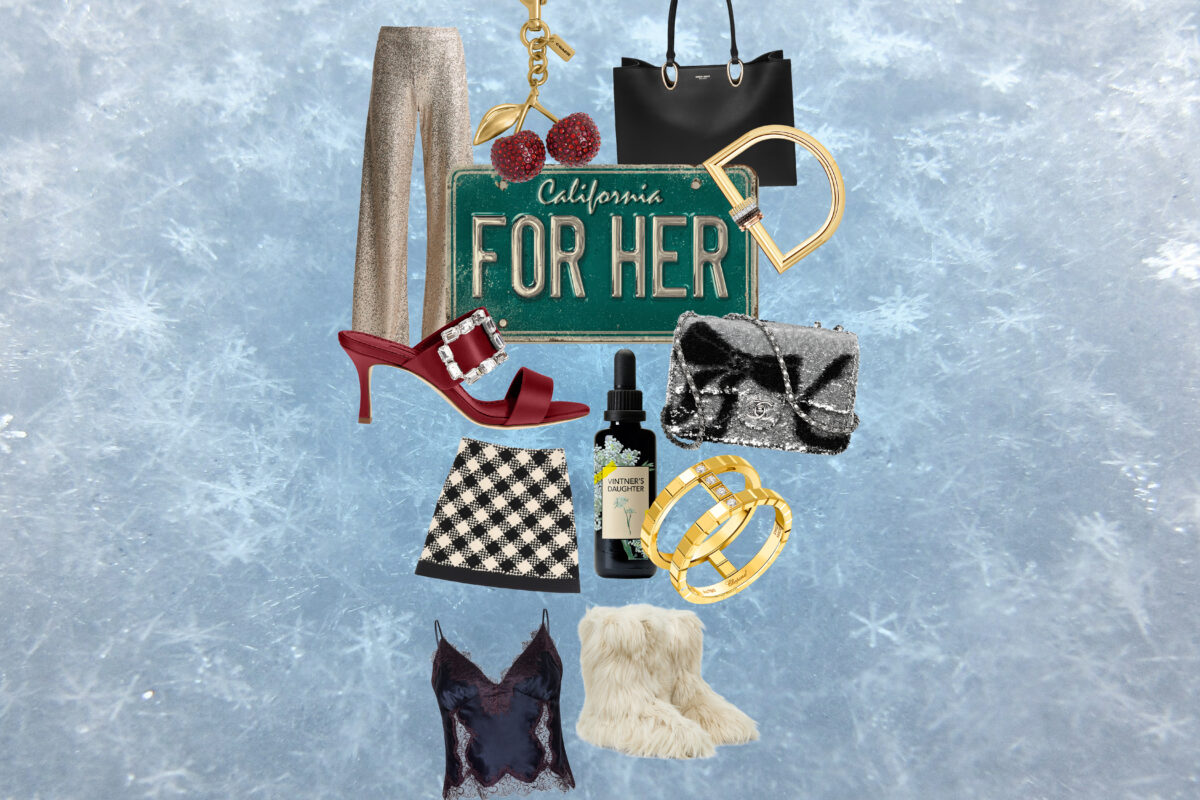Los Angeles’ fashion stock rises to new heights with the opening of avant-garde retail incubator Dover Street Market
Words by EVELYN CROWLEY
Photography by RAINER HOSCH
One afternoon in late July, six Los Angeles fashion designers gather outside an Arts District construction site. The occasion? Dover Street Market, the international emporium of high-concept cool, is opening on that very spot in October, and their homegrown labels will be among its offerings.
“A lot of us kind of grew up together, so it’s fun to be in the same place,” says jewelry designer Shannon Nataf. “L.A. needs a Dover Street—there are so many creative people here who are ready and excited to see what [Dover Street Market] does.”
Even the most jaded shopper will agree that this new outpost is something special. Rei Kawakubo, the enigmatic designer behind the lauded Japanese label Comme des Garçons, and Adrian Joffe, her husband and president of Comme des Garçons International, opened the first Dover Street Market in London in 2004, determined to break all retail rules. Their North Star was Kawakubo’s concept of “beautiful chaos,” the synergy that sparks when creative forces collide. In practice, this meant a shop floor where directional edits of Balenciaga and Gucci mingle with exclusive Nike collaborations, and flashy streetwear shares shelf space with austere conceptual pieces and locally made wares. Sprinkled throughout is a healthy dose of Comme des Garçons, of course, and their offshoot lines such as Play (and Play Converse), Beatles CDG and CDG Rose Bakery.
The formula—like most everything Kawakubo touches—was a success. “They understand avant-garde, but they also understand what the kids are wearing,” L.A. jewelry designer Sophie Buhai explains. Today, in addition to London, there are Dover Street Markets in New York, Beijing, Ginza and Singapore. Kawakubo has designed each location herself and L.A. is no exception. The sprawling 19,500-square-foot, single-level space consists of two perpendicular concrete buildings accessible by a doorway. As always, there’s a showstopping centerpiece—in New York, it’s a glass elevator, in London, a spiral staircase. Here, it’s the hut: a sculptural interpretation of the shedlike structure that is the brand’s logo, rendered in wooden planks and
corrugated metal panels and scaled to massive proportions. “There are actually two of them—pure white,” says Joffe by phone. “They’ll pierce through the wall and out the other side.” Luxury partners, such as Balenciaga, Maison Margiela and Gucci, will be given individualized spaces to kit out while Kawakubo will decorate the rest of the store’s layout and interior. “There [aren’t] many places my collection can be,” says L.A.’s Tom Binns, who refers to his exuberant one-of-a-kind pieces as “un-jewelry.” “It should be worn by people who are very cultured, and Dover Street Market has that audience.”
One big difference for this store will be merchandising. “We want it to be a bit less luxury-orientated and more local,” says Joffe. “There [are] a lot of people in L.A. who only sell in L.A. They come from here. They make things here. And luxury is kind of saturated with Hollywood and everything.” The Dover Street team sought out the city’s foremost artisans. “People trust Dover Street to curate the best,” says Kurt Narmore, who designs the SoCal surf- and skate-inspired menswear label Noon Goons. “It’s a major honor to be chosen,” adds L.A.’s Scott Tepper, the owner of cult graphic tee label Ignored Prayers, whose line, like the other designers at the shoot, is carried at multiple Dover Street locations. Joffe also tapped filmmaker Rose Schlossberg (granddaughter of Jacqueline Kennedy Onassis) as Dover Street L.A.’s correspondent, covering both in-store happenings and the city’s larger arts and culture scene through short films. “They help give a platform to people they believe in,” says Eli Russell Linnetz, a creative director for the likes of Kanye West and Lady Gaga who’s been given carte blanche to merchandise a special section of the store.
Not surprisingly, Dover Street is often credited as a pioneer of the experiential store-as-cultural hub model that’s proven a worthy adversary to the convenience of e-commerce. Artists are regularly commissioned to create in-store installations (Narmore is planning one for L.A. in November); there are designated spaces for hosting events; even the in-store café (Paris’ famed Rose Bakery) is designed to encourage lingering. “It’s all about community,” says Joffe. “For our kind of fashion, which values the importance of creation, of moving things forward, people need to come together and interact.”
Similar logic played into Kawakubo’s decision to bring Dover Street to Los Angeles in the first place. “L.A. is basically our biggest U.S. market outside [of] New York. However, it never felt like the right time,” explains Joffe. “But now we like the energy that’s happening. People seem [keener] about art and creation. More of our creative friends are moving here. And—not to get too political—it’s a freer place.”
Last November, while Kawakubo and Joffe were in town finalizing the building plans, Joffe Googled “the 10 weirdest stores in L.A.” “We visited about half of them,” he laughs. “Some were kind of dodgy, but they were interesting. People were doing their own thing. And I think Rei really liked that.” 606-608 Imperial St., L.A., 310-427-7610.
This story originally appeared in the October 2018 issue of C magazine.


